Overview
Data modeling is a key step in designing databases, involving a deep analysis and abstraction process of various types of data and their interrelationships in the real world. In this process, we try to reveal the intrinsic connections between data and formalize them into data models, laying the foundation for the database structure of the information system. NocoBase is a platform driven by data models, with the following features:
Supports Access to Data from Various Sources
NocoBase supports data sources from various origins, including common databases, API/SDK platforms, and files.
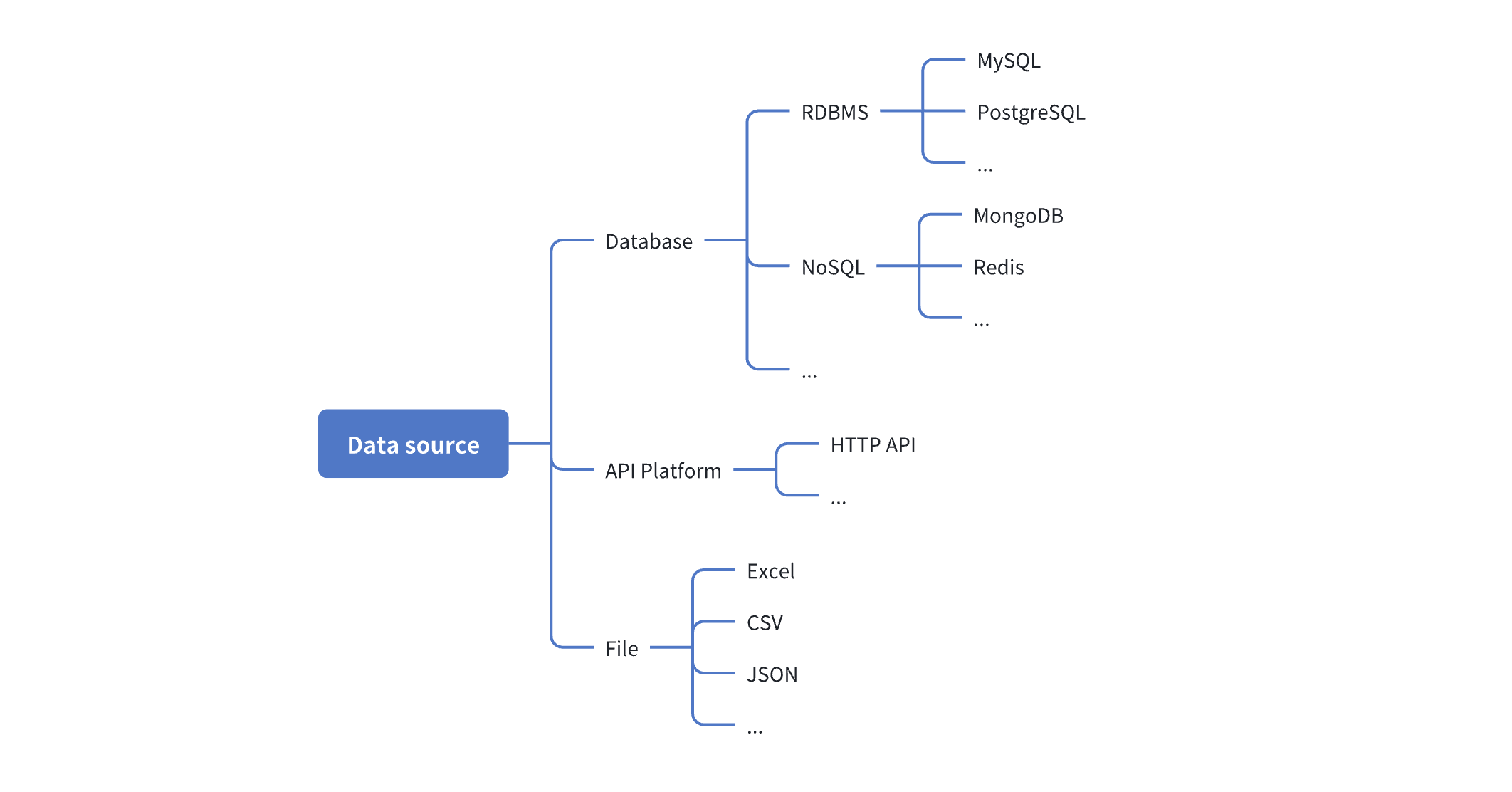
NocoBase provides a data source manager for managing various data sources and their collections. The data source manager plugin only provides a management interface for all data sources and does not provide the ability to directly access data sources. It needs to be used in conjunction with various data source plugins. The currently supported data sources include:
- Main Database: NocoBase's main database, supporting relational databases such as MySQL, PostgreSQL, and MariaDB.
- KingbaseES: Use KingbaseES database as a data source, which can be used as both a main database and an external database.
- External MySQL: Use an external MySQL database as a data source.
- External MariaDB: Use an external MariaDB database as a data source.
- External PostgreSQL: Use an external PostgreSQL database as a data source.
- External MSSQL: Use an external MSSQL (SQL Server) database as a data source.
- External Oracle: Use an external Oracle database as a data source.
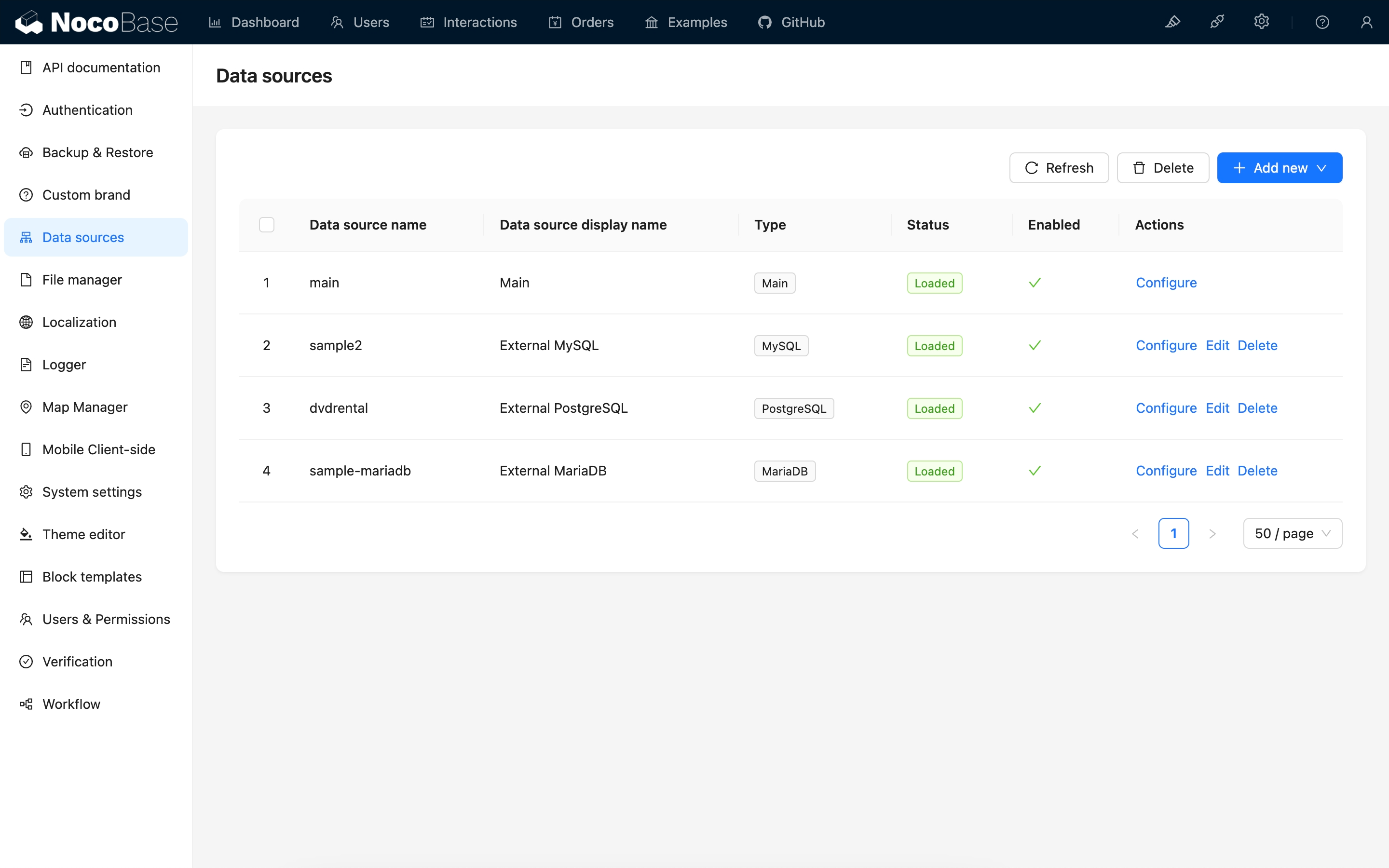
Provides a Variety of Data Modeling Tools
Simple collection management interface: Used to create various models (collections) or connect to existing ones.
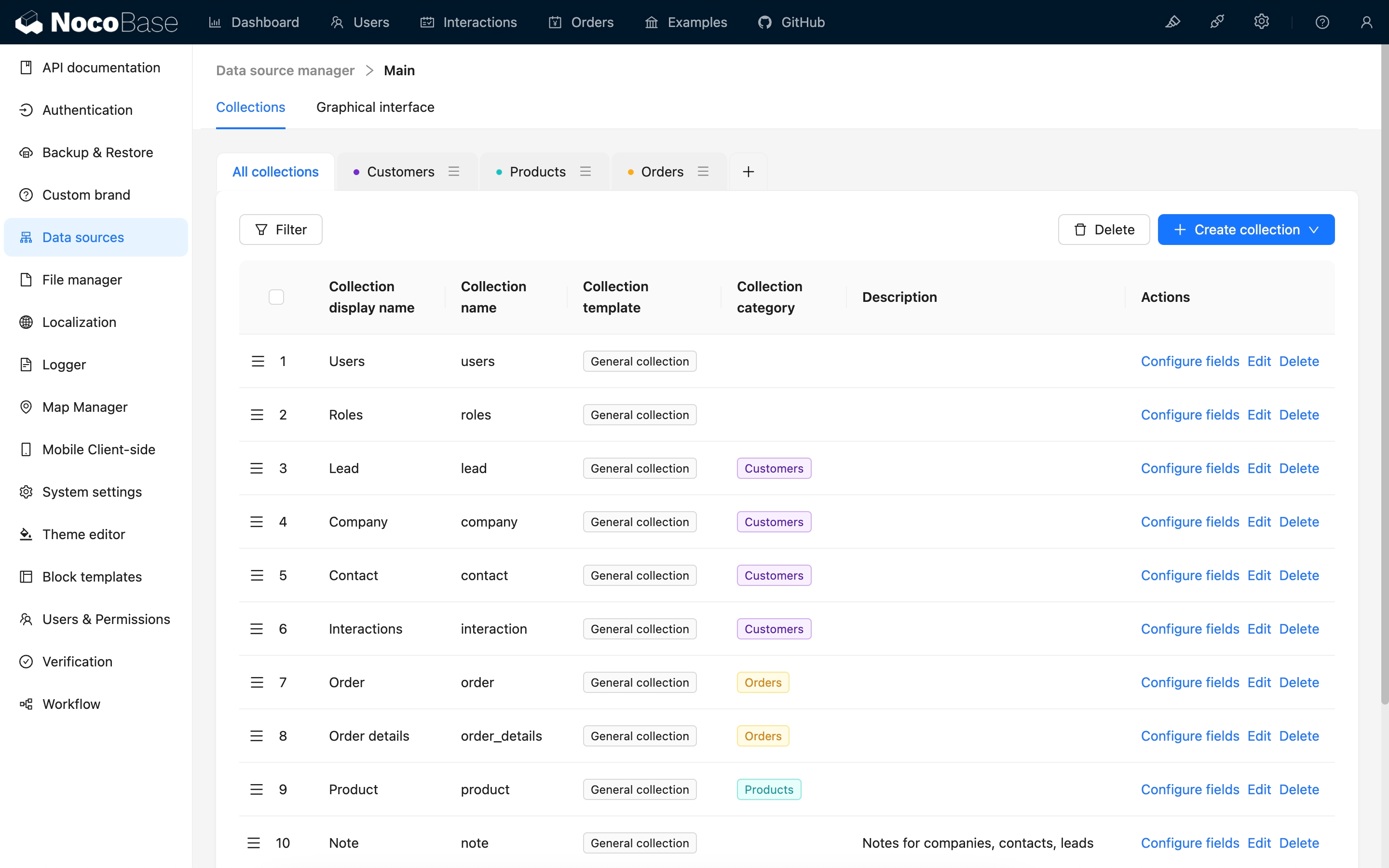
ER-style visual interface: Used to extract entities and their relationships from user and business requirements. It provides an intuitive and easy-to-understand way to describe data models. Through ER diagrams, you can more clearly understand the main data entities in the system and their relationships.
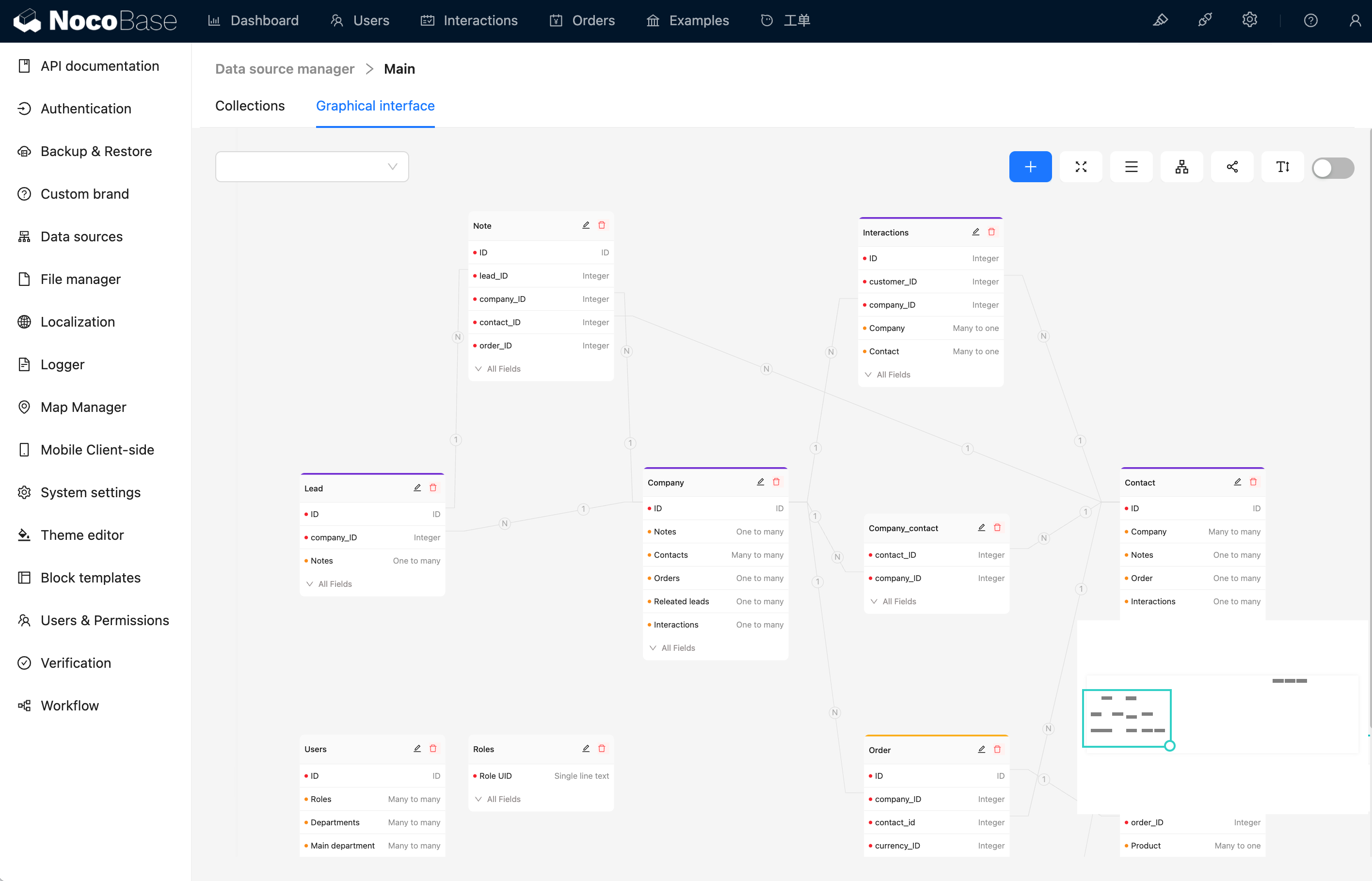
Supports Various Types of Collections
- General collection: Built-in common system fields;
- Calendar collection: Used to create calendar-related event collections;
- Comment collection: Used for storing comments or feedback on data;
- Tree collection: Tree-structured collection, currently only supports the adjacency list model;
- File collection: Used for file storage management;
- SQL collection: Not an actual database collection, but visualizes SQL queries in a structured manner;
- Connect to database view: Connects to existing database views;
- Expression collection: Used for dynamic expression scenarios in workflows;
- Connect to foreign data: Allows the database system to directly access and query data in external data sources based on FDW technology.

For more content, see the "Collection / Overview" section.
Provides a Rich Variety of Field Types
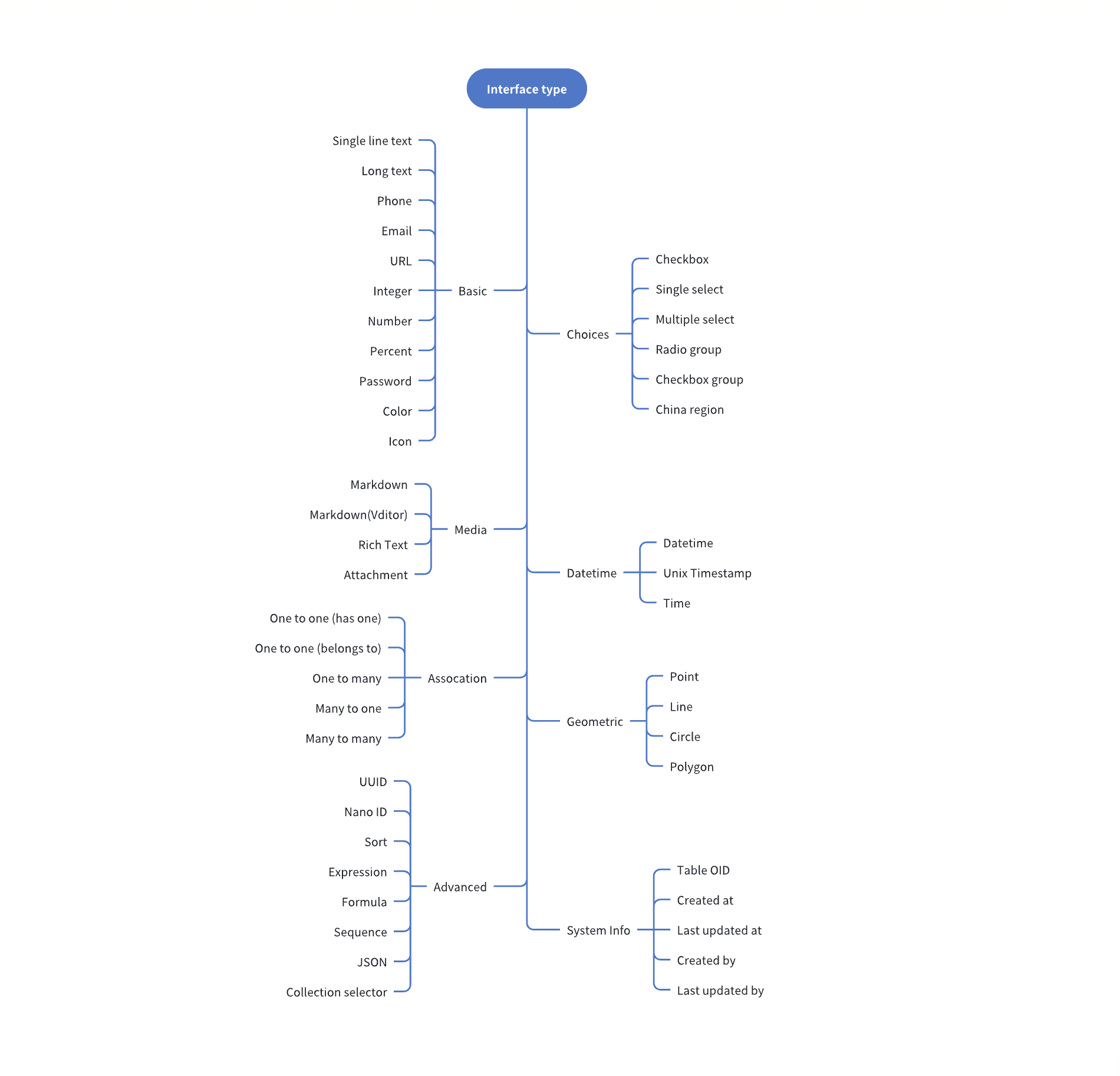
For more content, see the "Collection Fields / Overview" section.

